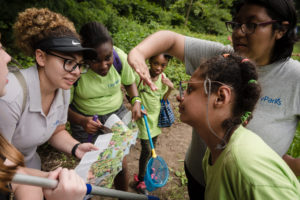Author, Kara Arundel
Published, February 2, 2021

“Interest in offering summer instruction and enrichment programming for greater numbers of students is building amid pressure for school systems to address students’ learning loss and social-emotional health, said National Summer Learning Association CEO Aaron Dworkin.
And although there are logistical and funding hurdles to running summer programs during a pandemic, districts are getting creative by testing out unique strategies, forming new partnerships, and applying lessons learned during the school year to make virtual and hybrid learning equitable and fun,” Dworkin said.
“There are so many examples of what works that no one has to feel like they have to reinvent the wheel,” he said.
For example, Alexandria City Public Schools in Virginia expanded summer programming to all pre-K through 12th-grade students last year— from an invitation-only summer program from previous years —and plans to do so again this year.
School districts in Pennsylvania are partnering with Teachers in the Parks to offer hybrid learning and enrichment lessons this summer.State leaders also are recognizing the urgent need for expanded learning opportunities outside the traditional school year. In California, Gov. Gavin Newsom included $4.6 billion for summer learning in his proposed budget, and the Tennessee General Assembly passed a bill requiring schools to offer after-school learning mini-camps, learning loss bridge camps and summer learning camps.
Additionally, several states are dedicating part of their Elementary and Secondary School Emergency Relief funds — provided under the Coronavirus Aid, Relief and Economic Security (CARES) Act— to summer learning programs, according to a tracker from the National Conference of State Legislatures.
COVID-19’s toll on students has been harsh, and school systems are seeking solutions for learning loss. Since the beginning of the school year, districts are reporting lower attendance rates, increases in failing grades, and concerns about students’ mental well-being.